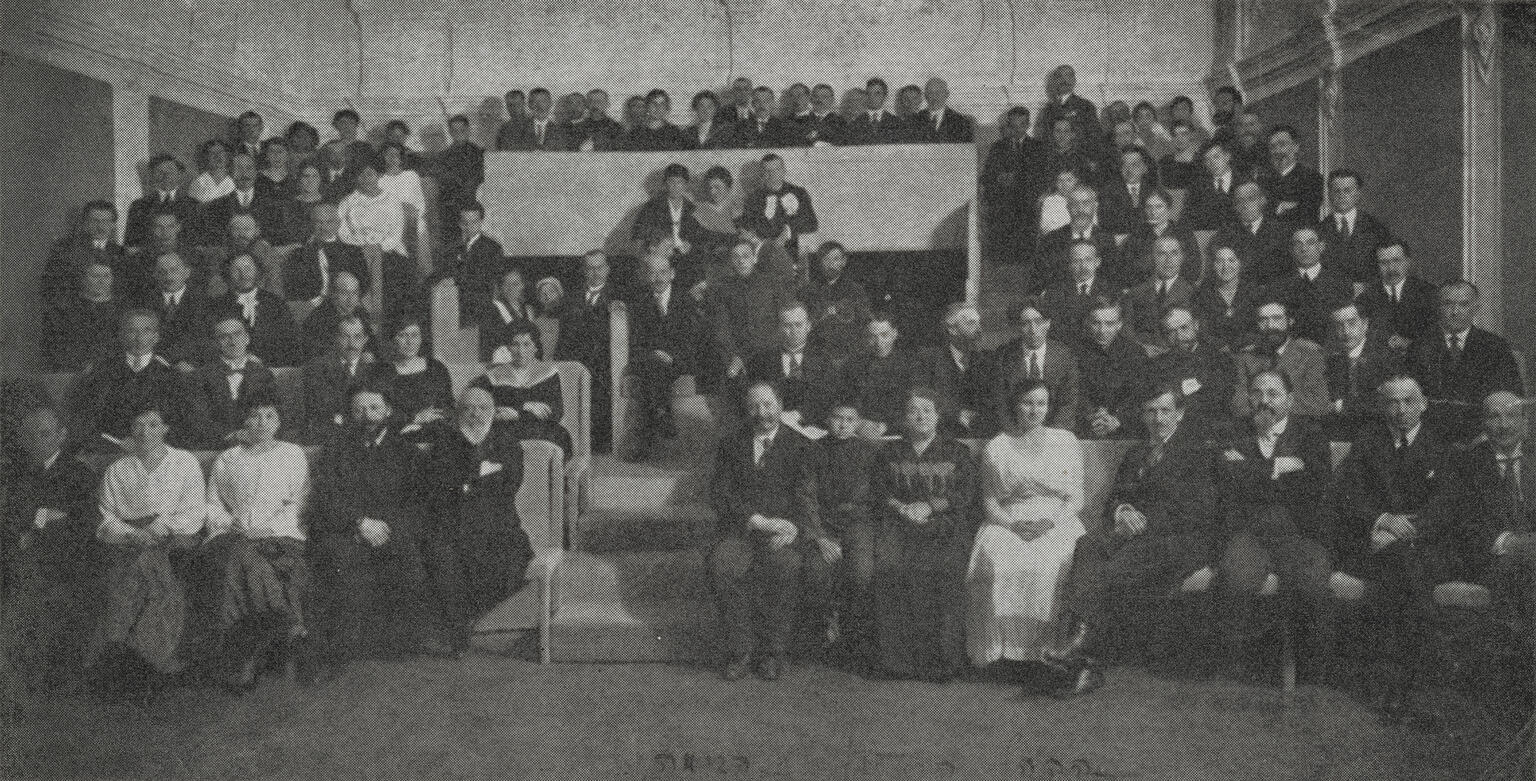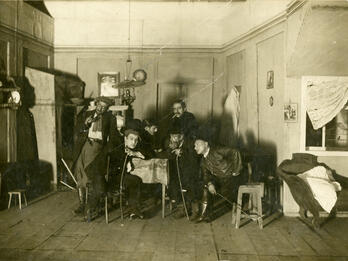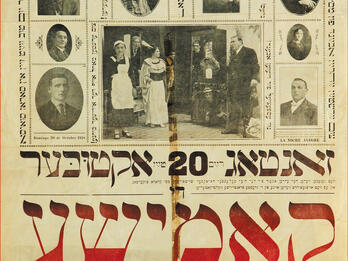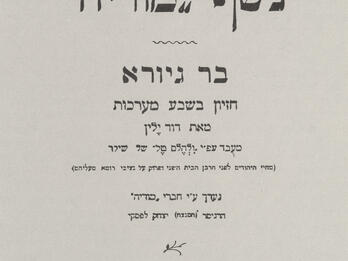The First Habima Theater Audience
Photographer Unknown
1918
Image

Engage with this Source
Restricted
Image
Places:
Moscow, Russian Empire (Moscow, Russia)
You may also like

Thieves
This scene is from the 1917 Vilna Troupe production of Fishl Bimko’s Ganovim (Robbers), featuring, from left to right, Morris Tarlov, Avrom Teytlboym, Herts Grosbard, Luba Kadison, and Noyekh Nakhbush…

Komishe nakht (Comical Night)
Advertisement for an October 20, 1918, Yiddish production of Komishe nakht, a French comedy by José Sanz Pérez, adapted into Yiddish by M. Oyerbakh. It was performed by Salon Casa Suiza in Buenos…
The Past and the Future of Yiddish Theater
The Jewish intelligentsia, the Jewish art patrons showed no sign of attention to Yiddish theater. A sickly weakling, it was born in southern Russia forty years ago, and has remained anemic and weak to…

Photographs of Donat Herrnfeld
The actor, comedian, and playwright Donat (David) Herrnfeld grew up in the small town of Raab (Győr) in Hungary; his family later moved to Vienna. Donat and his siblings performed and toured early on…

Announcement for Bar Giora Performance
Flyer for Bar Giora, an adaptation of Friedrich Schiller’s Wilhelm Tell by David Yellin, organized by drama class participants from the Moriah School. Students performed the play several times during…

The Melting Pot
The plot of Israel Zangwill’s 1908 play The Melting Pot described the love of a Jewish musician and composer for the Christian daughter of a Russian antisemite as epitomizing the promise of America…


